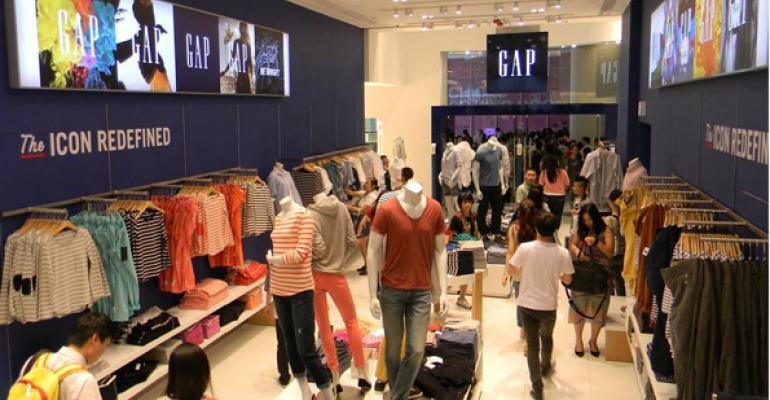News of Sonja Syngal’s appointment as global president for Old Navy is a recent bright spot for Gap, Inc., a retailer that has been saddled with a number of issues that need to be addressed. Companywide, Gap’s net sales per sq. ft. have dropped to $337, sliding down from $365 in 2013.
The company announced in June 2015 that it planned to shutter 175 Gap brand stores in North America. The bulk of those closings occurred last year, and amid those internal issues, the company faces an onslaught of competition from fast-fashion retailers like H&M and Zara. Observers believe that the company has the wherewithal to pull itself out of its current rut, mainly because of its strong cash position and low debt load. Time is money in American business, and for Gap Inc., analysts are hoping that it has enough of both to regain success.
The trouble with apparel
To be fair, troubles are rampant in the apparel sector, and a lot of the problems that are unraveling other operators are not the Gap’s main concern.
J.Crew, for example, which once excelled in selling the image of youth and vitality, is now dealing with the aches and pains of a decline. It had a net loss of $757.9 million in the third quarter of 2015. In the fourth quarter, its net loss was $7 million, right around the same time that TPG Capital, the private equity firm that led a leveraged buyout of J.Crew in 2011, reduced the value of its holdings in the retailer by 84 percent. Its C-suite is turning over. It will take deft work for the retailer to avert bankruptcy, the current plight of Claire’s Stores and Pacific Sunwear of California.
“Almost the whole segment is bad,” says Howard Davidowitz, chairman of Davidowitz & Associates Inc., a New York City-based national retail consulting and investment-banking firm. “The mall-based apparel chains generally are very weak and Gap is the largest among them.”
During Gap’s expansion into malls, the company did so with thousands of stores, many of which went into secondary or lackluster shopping centers that only became worse over time as anchor stores lost their ability to attract foot traffic, Davidowitz says. And that was only one on its list of problems which, according to Davidowitz, include the following:
Millennial shoppers generally do not enjoy hanging out in malls;
Young potential shoppers are spending time on mobile devices and social media interaction;
Instead of stocking up on sweaters, they gravitate to footwear;
Fast-fashion retailers like H&M, Zara and Uniqlo have given the Gap stiff competition.
The key to competing effectively with the likes of Zara and Uniqlo, industry observers say, is for Gap to maintain a speedy product-to-market supply chain model. That is why Chicago-based research firm Morningstar reacted positively to news of Syngal’s promotion within Old Navy.
“Gap’s appointment of a person with a supply chain background reassures us that this skill set remains core to Gap’s strategy,” according to recent note. “She was responsible for managing all aspects of global sourcing, logistics and product operations across all Gap brands and channels.”
Yet even if Gap was able to beat its competitors with fast fashion turnarounds, middle class and young consumers, who make up its core customers, are under economic strain. In 2014, around 46.6 million Americans received food stamps, up from about 25.5 million in 2007, the year before the last recession began, according to the U.S. Department of Agriculture. Similarly, the poverty rate was 14.8 percent in 2014, up from 11.5 percent in 2007.
There is enough liquidity in the moat
Although its challenges are clear, Gap has enough cash to support operations while it tries to improve. It has $8.4 billion between total assets and working capital, according to its 2015 annual report.
Morningstar notes that it sees no significant risks to the company’s liquidity levels. It expects the The Gap to generate average free cash flow of more than $900 million during the next five years. That should help it manage $1.7 billion in debt, including a $400 million term loan maturing this year.
This all appears to help Gap Inc. maintain the moat—or competitive advantage—between it and its competitors. Yet the retailer’s balance sheet could also be attracting attention from aggressive investors. Averting a leveraged buyout is the one critical difference between The Gap and PacSun and J.Crew, Davidowitz says.
“They did not add risk by piling on debt and bringing in a financial partner,” he notes. “That is a major point.”

